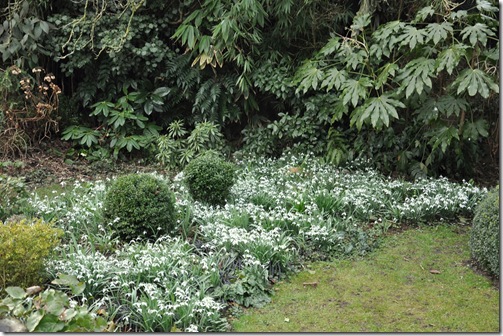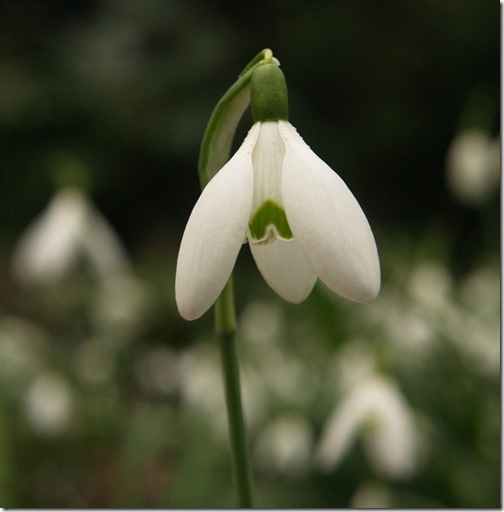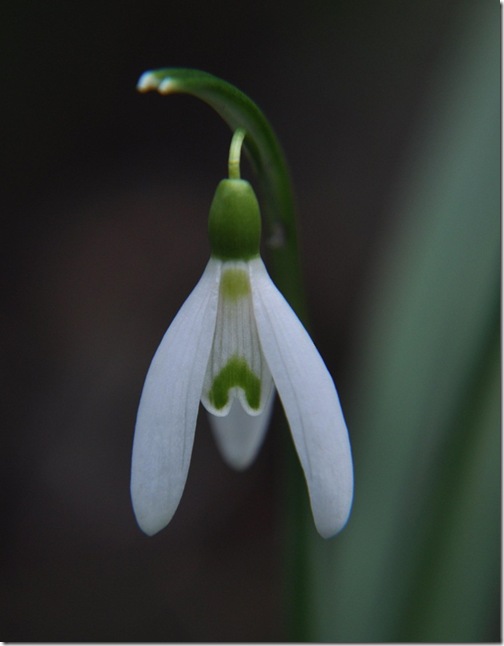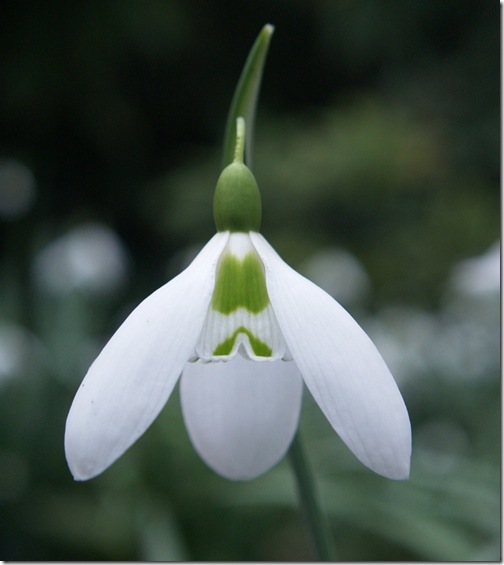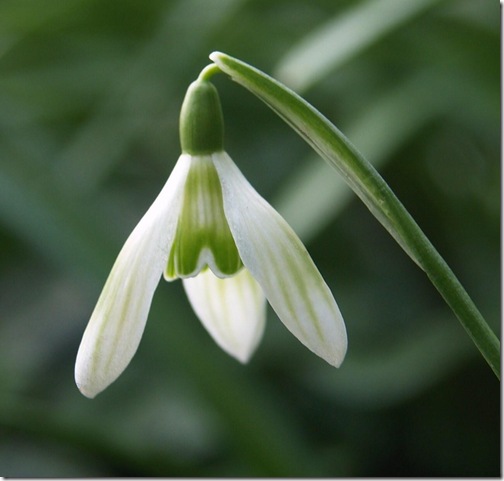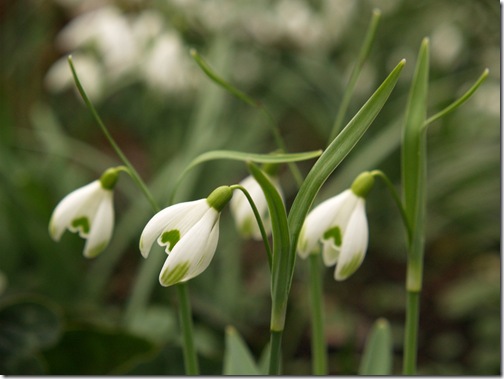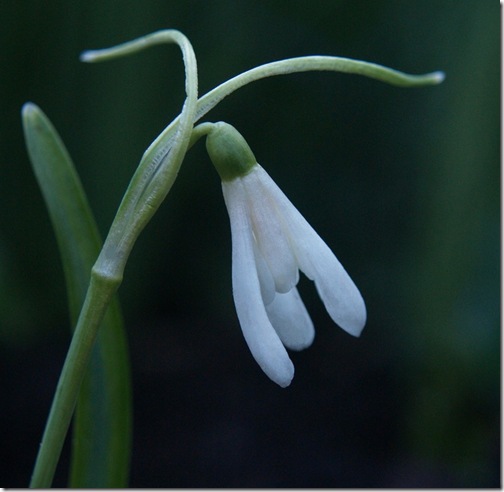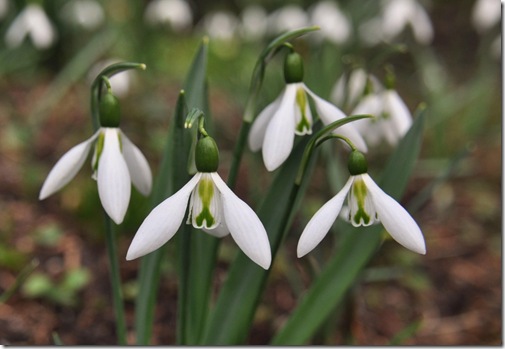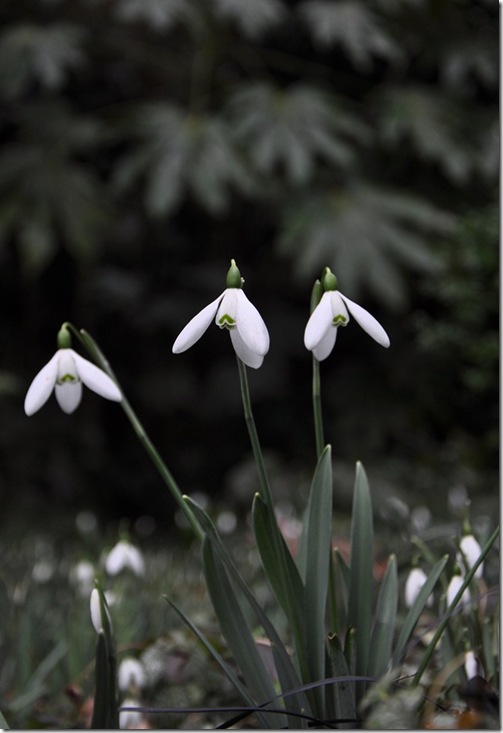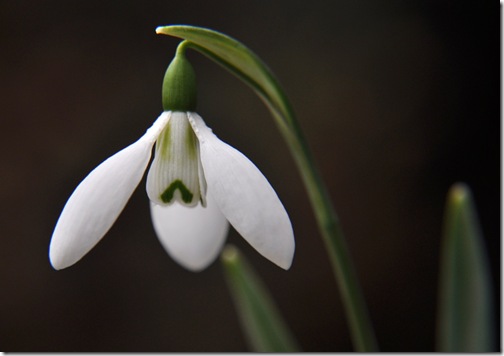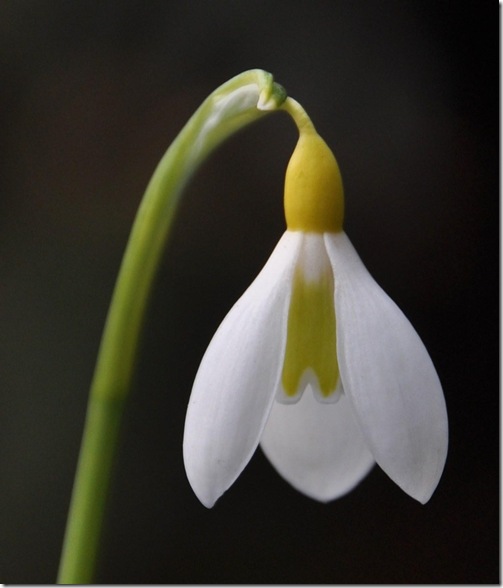Written by Harry Pierik
In his first article for GGW, A Hidden Paradise In the City, Harry introduced us to his magnificent Dutch garden. In this article, he shares some of the 200 different kinds of snowdrops that he has collected. It’s a pictoral delight! Harry has produced a short film ‘Garden of Eden Snowdrops in the Hidden Citygarden’ in which he shows various snowdrops and elaborates on their differences which you can view on his website. Fran Sorin
On gloomy winter days, the Hidden Citygarden is a veritable symphony of grayish brown, ochre and countless shades of wintergreen. In the center, the topiary shows up against the green of Hedera helix. On the left, the wintergreen leaf of Magnolia grandiflora with a thin layer of suede on the underside called ‘indumentum’. Like a fur of bamboo leaves, with just a slight touch of patina caused by the frost, Peioblastus hindsii nestles herself in the trimmed holly.
In the front and center of the picture is the leaf of Epimedium x peralchicum ‘Frohnleiten’. On the right: Snowdrops will soon be appearing under the old apple tree.
 |
 |
Snowdrops are maintaining themselves under a thick layer of snow.
Providing that it’s not too cold and there has been no snowfall, here in the Netherlands snowdrops can transform January and February into an early spring. In February and March many varieties of snowdrops bloom under the approximately one hundred year old apple tree or Malus domesticus ‘Laxton’s Superb’.
My Hidden Citygarden contains about two hundred different kinds of snowdrops, both in species and cultivated varieties.
This is the graceful flower of Galanthus nivalis, or common snowdrop.
Galanthus nivalis, translated from Greek, means ‘milk white flowers’ (Galanthus), and ‘white as snow’ (nivalis). This is the most common snowdrop in the Dutch forests, parks and gardens. Hence the name: ‘ gewoon sneeuwklokje’ or ‘common snowdrop’. Her flat, sea green leaves grow opposite one another and her inner petals are usually marked with a green crescent moon shaped spot.
Snowdrops are highly variable and new varieties arise constantly, while it is often unclear who their parents are.
The elegant little flower of Galanthus ‘Geert Groote’, which is smaller than a centimeter, has a distinctive spot at the base and a fishtail or green wing nut on the end of her inner petals. I have named this minuscule snowdrop after Geert Groote, a clergyman who, in 1387, established the famous and lost monastery of the ‘Moderne Devoten’ at the village of Windesheim. It was near this site that I discovered this flower.
The characteristic green mark of Galanthus ‘Armine’, a beautifully proportioned, moderately large Snowdrop.
There are types of Galanthus nivalis that have a green mark or a green haze on their outer petals, such as can be seen with Galanthus nivalis ‘Greenish’.
A green tip snowdrop, Galanthus nivalis ‘Scharlockii’ can be instantly recognized by her long split spathe, which is why she is aptly named ‘donkey’s ear snowdrop’. The German physician Julius Scharlock discovered this snowdrop in 1868 in the Nahe valley.
Next to the common and white varieties, the Hidden Citygarden also contains some specimens of an albino Scharlockii: the exceptionally frail beauty that is Galanthus ‘Lady Scharlock’ (born in my garden).
In the front: a home-built birdbath among Epimedium x peralchicum ‘Frohnleiten’. In the back you will find numerous wintergreen shrubs such as Fatsia japonica, the broad-leaved bamboo Sasa palmata and Aucuba japonica ‘Rozannie’ with her glistening berries.
The mark of this snowdrop resembles an imitation of the x mark found on Galanthus ‘Robin Hood’ (see film). Galanthus ‘Imitatio’ finds her origins on the site that held the ‘Agnieten Monastery’ where Thomas a Kempis wrote his widely renowned book ‘De Imitatione Christi’ in the fifteenth century.
In this open space next to the topiary several types of Turkish snowdrop can be found amongst the Petasites hybrides and Helleborus hybrids. This Galanthus elwesii shows colossal blooms and displays broad blue-green and grayish leaves that are folded in at the base. This too is a rather variable species that is named after the nineteenth-century ornithologist and plant collector Henry John Elwes, who took the first bulbs from the Turkish mountains to England.
Contrary to most other snowdrops, Galanthus elwesii prefers locations with abundant sunlight throughout the whole year. There is no harm in having the pervious soil dry out a bit during the summer. The flowers will bloom first in open places where the thermal radiation is not hindered by foliage and the soil has been able to cool down sufficiently during the autumn.
The robust, early blooming Galanthus elwesii ‘Mrs McNamara’ is a stately apparition. The sturdy, wide-spreading flowers rest on long stalks that rise above the well-developed narrow glaucous foliage.
A different specimen of the great snowdrop is Galanthus elwesii ‘Fieldgate Prelude’ with her beautiful green shadow on the inner petals.
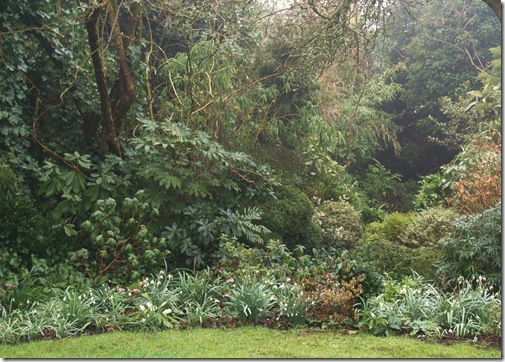
Just out of sight, among the snowdrops and other plants, a deepened path cuts across the garden.
A greater challenge to maintain, but very special, are the yellow snowdrops. The characteristic yellow mark can be found on the inner petals and the ovary. Galanthus plicatus ‘Wendy’s Gold’ shows a large olive-green yellow mark on her inner petals.
Next year I will acquaint you with a few other snowdrops from my collection.
In my next weblog, I will share with you a spring-impression of Helleborus hybrids and -species, as well as the bulbous plants that brighten my Hidden Citygarden in April.



